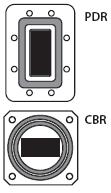Flange
Flange
A flange is a method of connecting pipes, valves, pumps, and other equipment to form a piping system. It also provides easy access for cleaning, inspection, or modification. Flanges are usually welded or screwed into such systems and then joined with bolts.
Types of Flanges[edit | edit source]
There are several types of flanges, each serving different purposes and applications:
- Weld neck flange: This type of flange is designed to be welded to the pipe. It is known for its high strength and is used in high-pressure applications.
- Slip-on flange: This flange is slipped over the pipe and then welded both inside and outside to provide sufficient strength and prevent leakage.
- Socket weld flange: This type of flange is used for small-diameter, high-pressure pipes. The pipe is inserted into the socket end and then fillet welded around the top.
- Lap joint flange: This flange is used with a stub end, which is welded to the pipe. The flange itself is not welded or fixed to the pipe, allowing it to rotate for easy alignment.
- Threaded flange: This flange is screwed onto the pipe, making it suitable for low-pressure applications where welding is not feasible.
- Blind flange: This is a solid flange used to close off the end of a piping system or a vessel opening.
Materials[edit | edit source]
Flanges are made from various materials, depending on the application and the environment in which they will be used. Common materials include:
Applications[edit | edit source]
Flanges are used in a wide range of industries, including:
- Oil and gas industry
- Chemical industry
- Water treatment
- Power generation
- Food and beverage industry
- Pharmaceutical industry
Standards[edit | edit source]
Flanges are manufactured according to various international standards to ensure compatibility and reliability. Some of the most common standards include:
- American Society of Mechanical Engineers (ASME)
- International Organization for Standardization (ISO)
- Deutsches Institut für Normung (DIN)
- British Standards (BS)
Installation[edit | edit source]
Proper installation of flanges is crucial to ensure the integrity of the piping system. The process typically involves:
- Aligning the flanges
- Inserting the gasket between the flanges
- Tightening the bolts in a star pattern to ensure even pressure distribution
Maintenance[edit | edit source]
Regular maintenance of flanges is essential to prevent leaks and ensure the longevity of the piping system. This includes:
- Inspecting for signs of wear or damage
- Replacing gaskets as needed
- Ensuring bolts are properly tightened
See Also[edit | edit source]
References[edit | edit source]
External Links[edit | edit source]
Navigation: Wellness - Encyclopedia - Health topics - Disease Index - Drugs - World Directory - Gray's Anatomy - Keto diet - Recipes
Search WikiMD
Ad.Tired of being Overweight? Try W8MD's physician weight loss program.
Semaglutide (Ozempic / Wegovy and Tirzepatide (Mounjaro / Zepbound) available.
Advertise on WikiMD
WikiMD is not a substitute for professional medical advice. See full disclaimer.
Credits:Most images are courtesy of Wikimedia commons, and templates Wikipedia, licensed under CC BY SA or similar.Contributors: Prab R. Tumpati, MD





